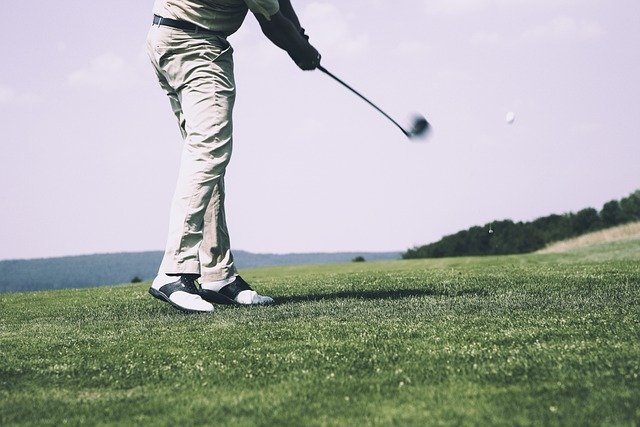The Art and Science of Golf Clubs: A Comprehensive Guide
Golf clubs are the essential tools that enable players to engage in the sport of golf. These carefully crafted instruments have a rich history and continue to evolve with advancements in technology and understanding of the game. This article explores the various aspects of golf clubs, from their origins to the future of club design and performance.

How did the golf swing evolve over time?
The origins and evolution of the golf swing are deeply intertwined with the development of golf clubs. In the early days of golf, players used rudimentary wooden clubs to strike feather-stuffed leather balls. The swing was more of a scooping motion, as the club designs were not conducive to the modern golf swing we know today.
As club technology improved, so did the swing. The introduction of iron-headed clubs in the 19th century allowed for more precise shots and led to the development of a more vertical swing plane. The transition from hickory shafts to steel in the 1930s brought about increased consistency and power, further refining the golf swing.
The modern golf swing, characterized by a full shoulder turn and hip rotation, emerged in the mid-20th century. This evolution was largely influenced by the improved club designs that allowed for greater clubhead speed and control.
What are the bio-mechanics behind the perfect swing?
The bio-mechanics of the golf swing involve a complex interplay of various body parts working in harmony. A perfect swing requires a combination of flexibility, strength, and coordination. The key components of the swing include:
-
The setup: Proper posture and alignment set the foundation for a good swing.
-
The backswing: Involves rotation of the shoulders, hips, and arms to create potential energy.
-
The downswing: Initiated by the lower body, transferring energy up through the torso and arms.
-
Impact: The moment of truth where the clubface meets the ball.
-
Follow-through: Completion of the rotational movement, ensuring proper energy transfer.
Understanding these bio-mechanical principles helps golfers and club designers optimize performance. Modern golf clubs are engineered to complement these movements, with features like perimeter weighting and adjustable clubheads that enhance the efficiency of the swing.
How can golfers train to perfect their swing?
Perfecting the golf swing requires dedicated practice and proper training techniques. Golfers can improve their swing through a combination of physical conditioning, technical practice, and mental preparation. Some effective training methods include:
-
Video analysis: Reviewing slow-motion footage of one’s swing to identify areas for improvement.
-
Swing drills: Repetitive exercises focusing on specific aspects of the swing, such as tempo or path.
-
Strength and flexibility training: Exercises targeting the core, legs, and upper body to enhance power and control.
-
Mental visualization: Imagining the perfect swing to reinforce muscle memory and confidence.
-
Professional instruction: Working with a golf pro to receive personalized feedback and guidance.
Additionally, using training aids such as alignment sticks, swing trainers, and launch monitors can provide valuable feedback and help golfers make incremental improvements to their swing.
What challenges do golfers face in mastering the swing?
Mastering the golf swing is a lifelong pursuit for many players, fraught with challenges and rewards. Some of the primary obstacles golfers encounter include:
-
Consistency: Replicating the same swing motion repeatedly under various conditions.
-
Mental barriers: Overcoming performance anxiety and maintaining focus during play.
-
Physical limitations: Addressing issues like lack of flexibility or strength that can hinder swing mechanics.
-
Equipment adaptation: Adjusting to new club technologies and finding the right fit for one’s swing.
-
Course management: Applying the perfect swing to different lies and situations on the course.
Despite these challenges, the rewards of mastering the swing are significant. A well-executed golf swing can lead to improved scores, increased enjoyment of the game, and a sense of personal achievement.
What does the future hold for golf club technology?
The future of golf clubs and swing technology is promising, with ongoing innovations aimed at enhancing performance and player experience. Some emerging trends include:
-
Advanced materials: Development of lighter, stronger materials for club construction, allowing for larger sweet spots and increased forgiveness.
-
Artificial intelligence: Use of AI in club design and fitting processes to create personalized equipment.
-
Smart clubs: Integration of sensors and data analytics to provide real-time feedback on swing metrics.
-
Virtual reality training: Immersive environments for practicing and analyzing swings without being on the course.
-
3D printing: Custom-designed clubheads tailored to individual swing characteristics.
As technology continues to advance, golf clubs of the future may adapt in real-time to a player’s swing, optimizing performance for each shot. However, it’s important to note that while technology can aid in improvement, the fundamentals of a good golf swing will likely remain rooted in proper technique and practice.
In conclusion, golf clubs are more than just tools; they are the bridge between a player’s intent and execution on the course. From their humble beginnings to the high-tech marvels of today, golf clubs have played a crucial role in shaping the game and the swings of those who play it. As the sport continues to evolve, so too will the clubs that make it possible, offering exciting possibilities for golfers of all skill levels.






